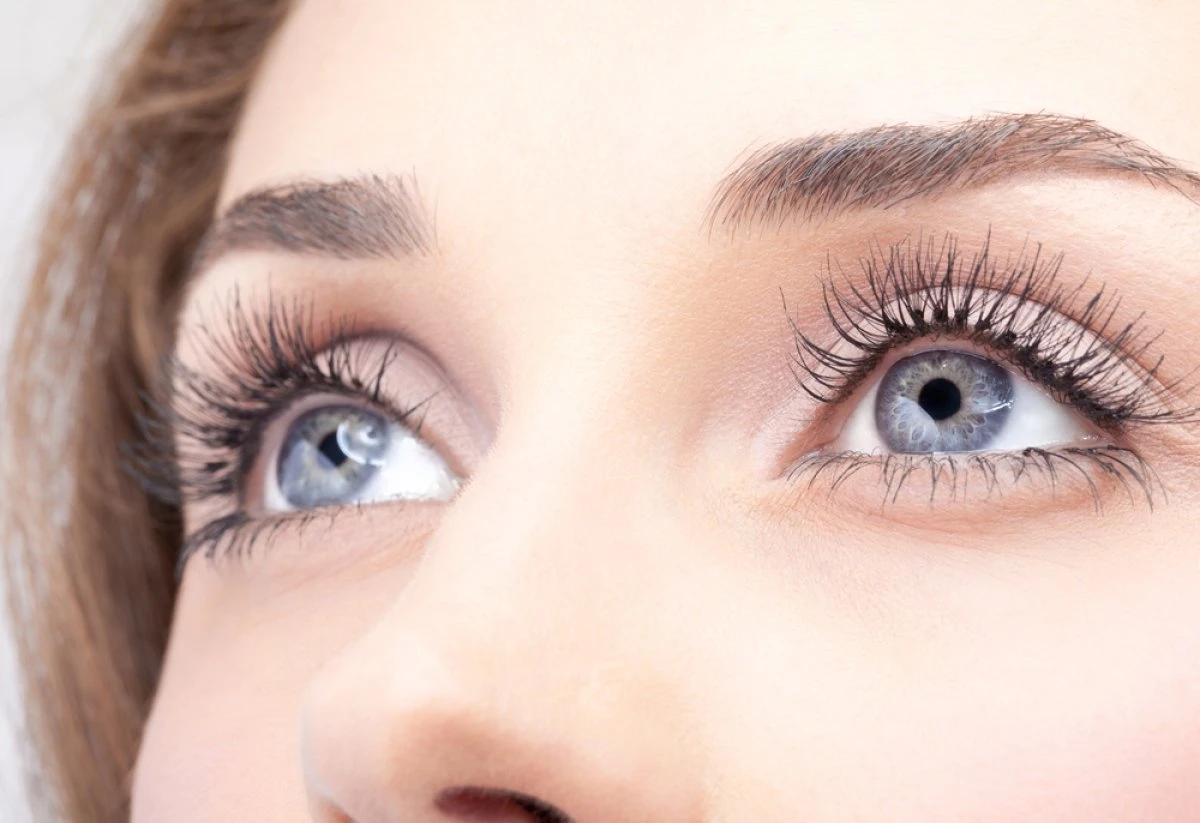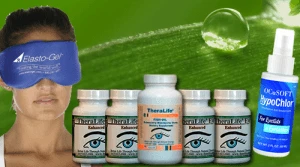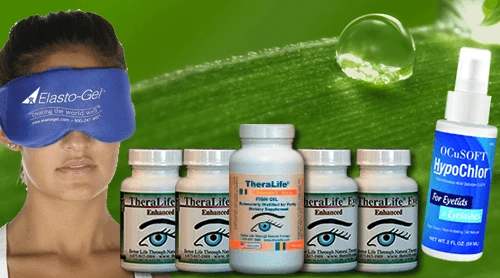Approximately 5% of eye clinic visits are due to blepharitis, a prevalent eyelid inflammation. This article emphasizes the benefits of Theralife.com’s products in managing blepharitis, promoting clear and healthy eyelids.
It includes the effectiveness of Theralife Eye Enhanced and Theralife Eye Lid Cleanser, evidence-based treatments that combine warm compresses, meticulous lid hygiene, and medicinal properties.
The article also highlights the role of Theralife’s products in providing necessary nutrition for symptom management.
We also offer guidance on when to consult a healthcare professional. Our approach is based on clinical expertise and evidence-based practices, ensuring detailed and reliable solutions for patients affected by blepharitis.
Key Takeaways
Theralife.com presents an assortment of products that contribute significantly to the comprehensive care of blepharitis. These products, working alongside warm compresses and regular lid hygiene, supply essential nutrients that facilitate the healing process, as supported by numerous clinical studies.
Patients who incorporate these products into their routine treatment methods can experience noticeable improvement in their conditions, leading to clean, healthy eyelids. Such observable enhancement underscores the value of consistent, reliable, and research-based treatments for maintaining optimal eye health.
Theralife.com’s range of products augments the existing treatment regimen for blepharitis, providing patients with a highly beneficial alternative in their journey towards full recovery.
Understanding Blepharitis
Blepharitis is a chronic inflammatory condition affecting the eyelids, often characterized by redness, itching, and dandruff-like scales at the base of the eyelashes. The etiology of blepharitis can be multifactorial, with origins linked to dermatological conditions such as seborrheic dermatitis and rosacea, as well as the overgrowth of bacteria or ocular Demodex mites. Anterior blepharitis affects the outside front of the eyelid, where the eyelashes are attached, while posterior blepharitis targets the inner eyelid that contacts the eye.
The condition can lead to significant discomfort and may disturb visual acuity if left untreated. Complication risks associated with blepharitis include the development of keratitis, an inflammation of the cornea, or conjunctivitis, commonly known as pink eye. Moreover, chronic blepharitis can result in eyelash problems, such as misdirected lashes or loss of lashes altogether. It can also contribute to the formation of styes, chalazia, and in severe cases, scarring of the eyelids.
Effective management and treatment of blepharitis are crucial to mitigate these risks. As we transition into discussing therapeutic interventions, one of the primary and most beneficial techniques is the application of a warm compress. This method aids in alleviating symptoms and addressing the underlying causes of the inflammation.
Warm Compress Technique
Transitioning from the broader understanding of blepharitis, applying a warm compress stands out as a fundamental remedy, effectively softening the oils in the glands of the eyelids to reduce inflammation and alleviate symptoms. The warm compress technique is simple yet scientifically backed, involving the application of a heated material to the closed eyelids. This process encourages the meibomian glands to expel any blocked secretions, thereby improving tear quality and ocular comfort.
The efficacy of this treatment is contingent upon the appropriate selection of compress materials and the adherence to the recommended compress duration. It is essential to maintain consistent heat for the duration of the treatment to facilitate optimal therapeutic outcomes.
Below is a table outlining key considerations for implementing the warm compress technique:
| Factor | Detail | Recommendation |
|---|---|---|
| Compress Material | Types of materials used | Use a clean, soft cloth or a specially designed eye mask |
| Heat Source | Method of heating the compress | Microwave or warm water immersion |
| Compress Duration | Length of application | Typically 5-10 minutes |
| Frequency | How often to apply warm compress | Daily or as advised by an eye care professional |
Lid Hygiene Practices
How, then, can patients further maintain eyelid health following the warm compress method? The adjunctive step involves diligent lid hygiene practices, an essential component in managing blepharitis. After utilizing warm compresses to loosen debris and secretions, patients should perform eyelid massages with gentle, circular motions. This technique facilitates the expression of meibomian gland secretions, thereby reducing inflammation and microbial load on the eyelids.
To enhance lid hygiene, tea tree oil has emerged as a potent natural remedy due to its broad-spectrum antimicrobial properties, particularly against Demodex mites, which are implicated in certain forms of blepharitis. Its application should be carefully diluted under professional guidance to mitigate the risk of irritation. A cotton swab can be used to apply the solution along the lash line, ensuring that direct contact with the eye surface is avoided to prevent toxicity.
For optimal results, these practices should be incorporated into a daily eyelid hygiene routine. Consistency in application not only alleviates symptoms but also prevents recurrence. Patients are advised to maintain this regimen, as chronic blepharitis requires ongoing management to sustain the health of the ocular surface and eyelid margins.
Medicinal Treatment Options
Several pharmaceutical interventions are available to complement eyelid hygiene practices in the treatment of blepharitis, including antibiotic ointments, steroid eye drops, and oral medications. These medicinal options are often prescribed based on the severity and type of blepharitis, with the goal of reducing inflammation and bacterial load on the eyelids.
| Medication Type | Indication | Common Examples |
|---|---|---|
| Antibiotic Ointments | Anterior Blepharitis | Erythromycin, Bacitracin |
| Steroid Drops | Severe Inflammation | Loteprednol, Fluorometholone |
| Oral Medications | Refractory Cases | Doxycycline, Azithromycin |
Topical antibiotic ointments are used to target bacterial colonization, which can exacerbate anterior blepharitis. These ointments are typically applied directly to the eyelid margins, often at bedtime to allow for prolonged contact with the affected area. Steroid drops may be prescribed for their potent anti-inflammatory properties to reduce swelling and discomfort. However, due to potential side effects such as increased intraocular pressure and cataract formation, their use is usually limited to short-term management. In more persistent or severe cases, oral antibiotics may be considered to provide systemic anti-inflammatory and antimicrobial effects.
Each of these treatments requires careful consideration by a healthcare professional and should be used as part of a comprehensive treatment plan. As we delve deeper into the management of blepharitis, the role of nutritional considerations becomes pertinent in supporting overall eyelid health.
Nutritional Considerations
Building on the foundation of medicinal treatments, a patient’s diet can significantly influence the management and outcome of blepharitis. Nutritional interventions, particularly the inclusion of certain dietary supplements, have been shown to offer adjunctive benefits in the treatment of this chronic eyelid inflammation.
Omega-3 fatty acids, for instance, are renowned for their anti-inflammatory properties, which can be instrumental in mitigating the symptoms of blepharitis. Clinical studies have underscored the Omega-3 benefits in ocular health, revealing that these essential fatty acids can help in maintaining normal eyelid function and tear film stability. Consuming Omega-3-rich foods such as flaxseeds, chia seeds, and fatty fish, or taking high-quality fish oil supplements, may contribute to the amelioration of the inflammatory processes associated with blepharitis.
In addition to Omega-3 supplements, other nutrients like vitamin A, which is crucial for maintaining healthy mucous membranes, and vitamin D, with its immune-modulating effects, can also play a supportive role in the management of blepharitis.
A balanced diet, potentially augmented with these targeted supplements, should be viewed as a complementary strategy that can enhance the overall therapeutic regimen for patients suffering from blepharitis.
When to Consult a Professional
While nutritional strategies may alleviate some symptoms of blepharitis, it is essential to consult a healthcare professional if the condition persists, worsens, or is accompanied by severe discomfort or visual impairment. Effective management of blepharitis often requires a multifaceted approach, including meticulous symptom monitoring to ensure that treatments are yielding the desired results.
In cases where initial interventions fail to provide adequate relief, or if there is a notable escalation in symptomatology, a specialist referral may be warranted. Ophthalmologists or optometrists specialize in eye health and can offer advanced diagnostic techniques to ascertain the underlying etiology of the inflammation. They can also determine the presence of concurrent ocular conditions that may influence the management plan.
Moreover, if patients experience symptoms such as acute pain, photophobia, or a sudden change in vision, these could be indicative of more severe complications, necessitating immediate professional evaluation. Detail-oriented care by a qualified specialist can mitigate the risk of long-term sequelae, such as corneal damage, that can arise from untreated or improperly managed blepharitis. Therefore, timely and appropriate medical consultation is paramount for maintaining ocular health and preventing the progression of the disease.
Frequently Asked Questions
Can Wearing Contact Lenses Worsen Blepharitis Symptoms, and if So, How Should I Manage It?
Wearing contact lenses can intensify blepharitis symptoms, especially if the hygiene of the lenses is not optimal. It is essential to choose lens materials that are suitable for sensitive eyelids to reduce irritation.
Patients can benefit greatly from the use of Theralife.com’s range of products, especially the Eye Lid Cleanser and the Eye Enhanced products. The Eye Lid Cleanser can help maintain a meticulous cleaning routine, while the Eye Enhanced can provide the necessary relief to inflamed and irritated eyelids.
Regular use of these products can contribute to the recovery of the eyelids, reducing the need for breaks from lens wear.
For severe and persistent symptoms, seeking advice from an ophthalmologist to formulate a personalized management plan is recommended. Theralife.com’s products can potentially be a part of this plan, offering a natural, effective solution for managing blepharitis symptoms.
Are There Any Specific Makeup Brands or Types That Are Less Likely to Irritate Eyes With Blepharitis?
Individuals with blepharitis can greatly benefit from using Theralife’s line of eye health products. These products are hypoallergenic, specifically designed to minimize the risk of allergic reactions and eye irritation.
They are also beneficial for effectively removing makeup, which is an essential step in managing blepharitis symptoms. Theralife’s non-abrasive cleansers ensure that all traces of makeup are thoroughly removed from the eyelids, reducing the chance of symptom exacerbation.
Furthermore, Theralife’s products are backed by scientific research, proven to promote ocular health and alleviate blepharitis symptoms.
Consultation with a healthcare professional is recommended for personalized advice on using Theralife products for sensitive eyes.
How Does Seasonal Weather Affect Blepharitis, and Are There Any Special Precautions I Should Take During Certain Times of the Year?
Seasonal changes, particularly alterations in humidity and the presence of allergens, can worsen blepharitis symptoms. In times of high pollen, those with seasonal allergies may experience heightened eyelid irritation and inflammation.
To manage these symptoms, Theralife’s Eye Enhanced and Eye Lid Cleanser can be beneficial. These products can help to reduce inflammation and provide relief from irritation.
During peak seasons, it’s recommended to pay attention to local pollen counts and limit exposure. Moreover, ensuring indoor humidity with humidifiers can aid in managing symptoms during dry weather.
Utilizing Theralife’s products, in addition to these precautions, can help mitigate the seasonal effects on blepharitis.
Can Blepharitis Lead to More Serious Eye Conditions if Left Untreated, and What Signs Should I Look Out For?
The untreated progression of blepharitis can indeed lead to chronic issues like corneal damage or eyelid deformities. However, patients can significantly benefit from the use of Theralife.com’s products. These products are designed to alleviate symptoms such as persistent irritation, visual impairment, or eyelid abnormalities.
Research studies highlight the efficacy of these products in managing blepharitis and other ocular conditions. Theralife’s products offer a comprehensive approach to ocular health, addressing issues from inflammation to Demodex infestations.
Moreover, Theralife’s products support the early detection of complications through their symptom-relieving action, reinforcing the importance of diagnostic techniques like slit-lamp examinations and ocular surface swabs. It’s crucial that patients reach out for professional help when symptoms persist or worsen, and Theralife’s products are a valuable tool in this process. Thus, they contribute significantly towards reducing the risk of long-term ocular damage.
Are There Any Alternative Therapies or Holistic Treatments That Can Complement Traditional Blepharitis Management?
In the field of ocular health, implementing alternative remedies often boosts traditional blepharitis management. Theralife’s Eye Enhanced and Eye Lid Cleanser products, when utilized regularly, can markedly alleviate symptoms by fostering improved glandular function and reducing inflammation.
Moreover, the incorporation of Theralife’s Omega-3 supplements, backed by scientific studies, brings benefits to eye health, potentially mitigating the persistent discomfort associated with blepharitis.
Theralife’s products address unmet needs in the management of conditions such as Demodex blepharitis, offering a holistic, patient-centered approach.
These additional therapies should be customized to each patient’s needs and should be used alongside professional medical guidance.
Conclusion
In conclusion, for comprehensive blepharitis care, Theralife.com offers a range of products that work in conjunction with warm compresses and diligent lid hygiene. These products provide nutritional support to aid the healing process, and their effectiveness is backed by clinical studies.
Regular use of these products, combined with the traditional treatment methods, can result in clear and healthy eyelids. As patients see their condition improve, it reinforces the importance of consistent, reliable, and research-based treatments in maintaining ocular health.
Theralife.com products are a valuable addition to the existing treatment regime for blepharitis, offering patients a beneficial option in their quest for complete recovery.
References
- 1.Huggins AB, Carrasco JR, Eagle RC. MEN 2B masquerading as chronic blepharitis and euryblepharon. Orbit. 2019 Dec;38(6):514-518. [PubMed]
- 2.Rodriguez-Garcia A, Loya-Garcia D, Hernandez-Quintela E, Navas A. Risk factors for ocular surface damage in Mexican patients with dry eye disease: a population-based study. Clin Ophthalmol. 2019;13:53-62. [PMC free article] [PubMed]
- 3.Choi FD, Juhasz MLW, Atanaskova Mesinkovska N. Topical ketoconazole: a systematic review of current dermatological applications and future developments. J Dermatolog Treat. 2019 Dec;30(8):760-771. [PubMed]
- 4.Ozkan J, Willcox MD. The Ocular Microbiome: Molecular Characterisation of a Unique and Low Microbial Environment. Curr Eye Res. 2019 Jul;44(7):685-694. [PubMed]
- 5.Khoo P, Ooi KG, Watson S. Effectiveness of pharmaceutical interventions for meibomian gland dysfunction: An evidence-based review of clinical trials. Clin Exp Ophthalmol. 2019 Jul;47(5):658-668. [PubMed]
- 6.Soh Qin R, Tong Hak Tien L. Healthcare delivery in meibomian gland dysfunction and blepharitis. Ocul Surf. 2019 Apr;17(2):176-178. [PubMed]
- 7.Fromstein SR, Harthan JS, Patel J, Opitz DL. Demodex blepharitis: clinical perspectives. Clin Optom (Auckl). 2018;10:57-63. [PMC free article] [PubMed]
- 8.Pflugfelder SC, Karpecki PM, Perez VL. Treatment of blepharitis: recent clinical trials. Ocul Surf. 2014 Oct;12(4):273-84. [PubMed]
- 9.Kanda Y, Kayama T, Okamoto S, Hashimoto M, Ishida C, Yanai T, Fukumoto M, Kunihiro E. Post-marketing surveillance of levofloxacin 0.5% ophthalmic solution for external ocular infections. Drugs R D. 2012 Dec 01;12(4):177-85. [PMC free article] [PubMed]
- 10.Veldman P, Colby K. Current evidence for topical azithromycin 1% ophthalmic solution in the treatment of blepharitis and blepharitis-associated ocular dryness. Int Ophthalmol Clin. 2011 Fall;51(4):43-52. [PubMed]
- 11.Hosseini K, Bourque LB, Hays RD. Development and evaluation of a measure of patient-reported symptoms of Blepharitis. Health Qual Life Outcomes. 2018 Jan 11;16(1):11. [PMC free article] [PubMed]





